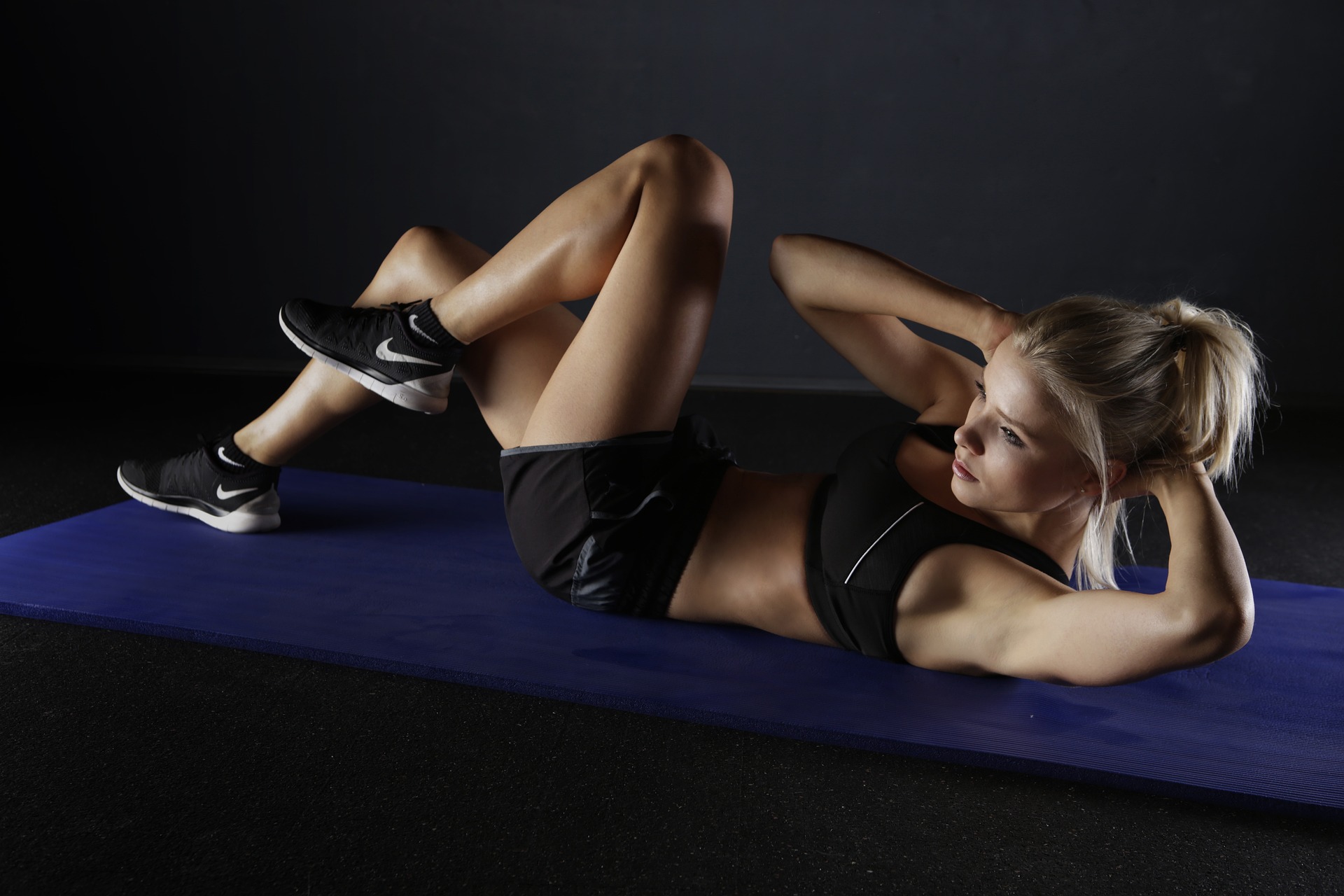Calisthenics Revolution: Bodyweight Mastery for Athletic Excellence
The fitness landscape is witnessing a seismic shift as athletes and fitness enthusiasts rediscover the power of calisthenics. This ancient form of bodyweight training, once overshadowed by high-tech gym equipment and complex workout routines, is now at the forefront of a movement that's redefining strength, flexibility, and functional fitness. From professional athletes to weekend warriors, calisthenics is proving that the most effective gym might just be the human body itself.

The Resurgence of Bodyweight Training
Calisthenics, derived from the Greek words “kallos” (beauty) and “sthenos” (strength), has been a cornerstone of human physical development for millennia. Ancient civilizations recognized the value of using one’s body weight as resistance, incorporating movements that mimicked real-life actions into their training regimens. This practical approach to fitness ensured warriors and athletes were prepared for the physical demands of their roles.
However, with the advent of modern gym equipment and specialized training protocols, calisthenics took a backseat in many fitness circles. The allure of machines promising targeted muscle development and quick results overshadowed the holistic benefits of bodyweight exercises. But as our understanding of human biomechanics and functional fitness has grown, so too has the appreciation for the elegance and effectiveness of calisthenics.
In recent years, a perfect storm of factors has contributed to the resurgence of calisthenics. The rise of social media platforms has allowed practitioners to showcase incredible feats of strength and control, inspiring millions worldwide. Additionally, the global pandemic forced many to reconsider their fitness routines, turning to bodyweight exercises as a convenient and effective alternative to gym-based workouts.
The Science Behind Calisthenics
At its core, calisthenics leverages the principles of physics and biomechanics to create resistance and challenge the body. Unlike isolated machine exercises, calisthenic movements engage multiple muscle groups simultaneously, promoting functional strength and improved motor control. This integrated approach not only enhances overall athleticism but also reduces the risk of muscle imbalances and injuries.
Research has shown that calisthenics can be as effective as traditional weight training for building strength and muscle mass. A study published in the Journal of Strength and Conditioning Research found that individuals who performed a calisthenics-based routine experienced similar gains in strength and muscle hypertrophy compared to those who used weight machines.
Moreover, the neurological benefits of calisthenics are particularly noteworthy. Complex bodyweight movements require a high degree of coordination, balance, and proprioception, leading to improved neural pathways and motor learning. This enhanced mind-body connection translates to better performance in various sports and everyday activities.
Beyond Strength: The Holistic Benefits of Calisthenics
While strength gains are a primary focus for many calisthenics practitioners, the benefits extend far beyond muscular development. The versatility of bodyweight training allows for a comprehensive approach to fitness that addresses multiple aspects of physical and mental well-being.
Flexibility and mobility are inherent components of many calisthenic movements. Unlike rigid machine exercises, bodyweight training often requires a full range of motion, promoting joint health and overall flexibility. This increased mobility not only enhances athletic performance but also contributes to better posture and reduced risk of chronic pain.
Cardiovascular health is another area where calisthenics excels. High-intensity calisthenic circuits can elevate heart rate and improve cardiovascular endurance, rivaling traditional cardio exercises. The ability to seamlessly transition between strength and cardio training makes calisthenics an efficient option for those seeking a well-rounded fitness routine.
Perhaps one of the most overlooked benefits of calisthenics is its positive impact on mental health. The mastery of challenging bodyweight skills fosters a sense of accomplishment and boosts self-confidence. The meditative aspects of controlling one’s body through space can reduce stress and improve focus, making calisthenics a form of moving meditation.
Calisthenics for Athletic Performance
Professional athletes across various sports are increasingly incorporating calisthenics into their training regimens. The functional strength and body awareness developed through bodyweight exercises translate directly to improved performance on the field, court, or track.
In combat sports, calisthenics plays a crucial role in developing the explosive power, agility, and core strength necessary for success. Mixed martial artists and boxers often use advanced bodyweight movements to enhance their striking power and grappling abilities. The ability to control one’s body weight efficiently is paramount in these dynamic sports.
Endurance athletes, too, are finding value in calisthenics. Long-distance runners and cyclists use bodyweight exercises to build core stability and upper body strength, elements often neglected in traditional endurance training. This balanced approach leads to improved posture, reduced risk of overuse injuries, and enhanced overall performance.
Even in team sports like basketball and football, where explosive movements and quick changes of direction are crucial, calisthenics provides a foundation of functional strength and body control. Athletes who master their body weight can generate more power, change direction more efficiently, and maintain better balance during competition.
Integrating Calisthenics into Your Training
For those looking to incorporate calisthenics into their fitness routine, the journey begins with mastering the basics. Fundamental movements like push-ups, pull-ups, squats, and planks form the building blocks of more advanced skills. Proper form and progression are key to reaping the full benefits of bodyweight training while minimizing the risk of injury.
As proficiency grows, practitioners can explore more challenging variations and complex movements. The beauty of calisthenics lies in its scalability – there’s always a way to increase difficulty or modify exercises to suit individual fitness levels. From one-arm push-ups to human flags, the possibilities for progression are virtually endless.
Creating a balanced calisthenics routine involves addressing all major muscle groups and movement patterns. A typical workout might include pushing exercises (e.g., push-ups, dips), pulling movements (e.g., pull-ups, rows), leg exercises (e.g., squats, lunges), and core work (e.g., planks, leg raises). The specific exercises and rep schemes can be tailored to individual goals, whether they be strength, endurance, or skill acquisition.
Periodization, a principle commonly used in traditional strength training, can also be applied to calisthenics. By systematically varying the intensity, volume, and complexity of workouts over time, athletes can continue to make progress and avoid plateaus. This structured approach ensures long-term development and helps prevent overtraining.
The Role of Nutrition in Calisthenics Success
While the focus of calisthenics is often on the physical movements, nutrition plays a crucial role in supporting performance and recovery. The demands of bodyweight training require a well-balanced diet that provides adequate energy and nutrients for muscle growth and repair.
Protein intake is particularly important for calisthenics practitioners. The continuous muscle tension and eccentric loading involved in many bodyweight exercises can lead to significant muscle damage and adaptation. Consuming high-quality protein sources throughout the day helps support muscle recovery and growth.
Carbohydrates are equally vital, providing the energy necessary for intense bodyweight workouts. Complex carbohydrates from whole grains, fruits, and vegetables offer sustained energy and support overall health. The timing of carbohydrate intake can be strategically planned around workouts to optimize performance and recovery.
Hydration is another critical factor often overlooked in bodyweight training. Proper fluid balance is essential for maintaining performance, especially during high-intensity calisthenic circuits that can lead to significant sweat loss. Electrolyte balance should also be considered, particularly for those training in hot environments or for extended periods.
The Future of Calisthenics in Sports and Fitness
As the popularity of calisthenics continues to grow, we’re likely to see its influence expand across various domains of sports and fitness. The principles of bodyweight mastery are being integrated into physical education programs, recognizing the importance of developing fundamental movement skills from a young age.
In the competitive arena, calisthenics is emerging as a sport in its own right. Events like the World Street Workout and Calisthenics Federation Championships showcase the incredible strength, skill, and creativity of top athletes. These competitions not only push the boundaries of human physical potential but also inspire a new generation of practitioners.
The fitness industry is also adapting to the calisthenics trend, with gyms and fitness centers incorporating more bodyweight-focused equipment and classes. This shift reflects a growing appreciation for functional, minimalist approaches to fitness that prioritize movement quality over external loads.
Technology is playing a role in the evolution of calisthenics as well. Mobile apps and online platforms offer structured bodyweight training programs, form guidance, and community support, making calisthenics more accessible to a global audience. Virtual reality and augmented reality technologies are also being explored as tools to enhance calisthenics training, offering immersive environments and real-time feedback.
Overcoming Challenges and Misconceptions
Despite its growing popularity, calisthenics still faces several challenges and misconceptions. One common belief is that bodyweight exercises are not sufficient for building significant muscle mass. While it’s true that adding external resistance can accelerate hypertrophy, advanced calisthenic movements can provide ample stimulus for muscle growth when performed with proper intensity and volume.
Another misconception is that calisthenics is limited in its ability to develop lower body strength. While traditional weightlifting exercises like squats and deadlifts are excellent for building leg power, calisthenic variations such as pistol squats, plyometric jumps, and single-leg movements offer unique challenges that contribute to well-rounded lower body development.
Injury prevention is a concern in any fitness discipline, and calisthenics is no exception. The dynamic nature of many bodyweight movements requires proper progression and attention to form. Beginners should focus on building a solid foundation of strength and mobility before attempting more advanced skills. Incorporating mobility work and proper warm-up routines can significantly reduce the risk of injury.
For those transitioning from traditional weightlifting to calisthenics, there may be an initial period of adjustment. The unique demands of bodyweight exercises can challenge muscles in new ways, potentially leading to temporary decreases in performance. Patience and consistent practice are key to overcoming these initial hurdles and reaping the long-term benefits of calisthenics training.
Calisthenics for Diverse Populations
One of the greatest strengths of calisthenics is its adaptability to different populations and fitness levels. From children to seniors, bodyweight exercises can be modified to suit individual needs and capabilities.
For older adults, calisthenics offers a low-impact way to maintain strength, balance, and mobility. Simple exercises like wall push-ups, chair squats, and standing leg raises can help preserve muscle mass and functional independence. The emphasis on body control and balance in calisthenics is particularly beneficial for fall prevention in the elderly.
Children and adolescents can benefit greatly from calisthenics as part of their physical development. Bodyweight exercises help build a foundation of strength, coordination, and body awareness that can support lifelong fitness and athletic pursuits. The playful nature of many calisthenic movements makes them engaging for young people, encouraging a positive relationship with physical activity.
For individuals with disabilities or chronic conditions, calisthenics can be adapted to provide safe and effective exercise options. Water-based calisthenics, for example, offers a supportive environment for those with joint issues or limited mobility. The principle of progressive overload can be applied gently, allowing individuals to improve their strength and function at an appropriate pace.
The Psychological Edge of Calisthenics
Beyond its physical benefits, calisthenics offers unique psychological advantages that contribute to overall well-being and athletic performance. The process of mastering bodyweight skills fosters a growth mindset, teaching practitioners to embrace challenges and view failures as opportunities for learning and improvement.
The sense of body mastery achieved through calisthenics can have profound effects on self-image and confidence. As individuals progress from basic movements to more advanced skills, they develop a deeper appreciation for their bodies’ capabilities. This improved body awareness often translates to increased confidence in other areas of life.
The community aspect of calisthenics also plays a significant role in its psychological benefits. Whether training in parks, gyms, or online communities, calisthenics practitioners often form supportive networks that encourage progress and share knowledge. This sense of belonging and mutual support can be a powerful motivator, especially during challenging times or when facing plateaus.
For competitive athletes, the mental fortitude developed through calisthenics training can provide an edge in high-pressure situations. The focus and body control required for complex bodyweight movements translate well to the concentration needed in competitive sports. Additionally, the problem-solving aspects of progressing through calisthenic skills can enhance an athlete’s ability to adapt and overcome obstacles in their sport.
Calisthenics and Functional Fitness
The concept of functional fitness has gained significant traction in recent years, emphasizing exercises that improve performance in real-life activities. Calisthenics aligns perfectly with this philosophy, as bodyweight movements often mimic natural human motions and engage multiple muscle groups simultaneously.
Functional strength developed through calisthenics translates directly to everyday tasks, from lifting groceries to climbing stairs. This practical application of strength is particularly valuable for individuals in physically demanding professions, such as firefighters, law enforcement officers, and military personnel.
Moreover, the emphasis on core strength and stability in calisthenics contributes to improved posture and reduced risk of back pain – common issues in today’s sedentary society. By strengthening the muscles that support the spine and teaching proper movement patterns, calisthenics can help counteract the negative effects of prolonged sitting and poor posture.
The portability of calisthenics makes it an ideal choice for maintaining fitness while traveling or in situations where access to gym equipment is limited. This adaptability ensures that practitioners can maintain their fitness routines regardless of their environment, promoting consistency and long-term adherence to exercise.
Calisthenics and Body Composition
For those focused on body composition goals, calisthenics offers a powerful tool for fat loss and muscle definition. High-intensity calisthenic circuits can create a significant metabolic demand, burning calories during the workout and promoting excess post-exercise oxygen consumption (EPOC), which leads to continued calorie burn after the session.
The muscle-building potential of calisthenics, combined with its fat-burning effects, can lead to impressive changes in body composition. The emphasis on compound movements engages multiple muscle groups, promoting overall muscle development and a balanced physique.
Furthermore, the progressive nature of calisthenics allows for continuous challenge and adaptation, preventing the plateaus often experienced with traditional weight training or cardio routines. As practitioners advance to more difficult variations of exercises, they continue to stimulate muscle growth and fat loss, even without adding external resistance.
It’s worth noting that while calisthenics can be highly effective for improving body composition, nutrition remains a crucial factor. Combining bodyweight training with a well-balanced diet tailored to individual goals is key to achieving optimal results.
The Role of Recovery in Calisthenics Training
As with any intense physical training, proper recovery is essential in calisthenics to prevent overtraining and promote continued progress. The high-frequency nature of many calisthenics routines, where certain movements may be practiced daily, requires a strategic approach to recovery.
Active recovery techniques, such as light mobility work or low-intensity movements, can help maintain flexibility and promote blood flow without overtaxing the muscles. Incorporating yoga or stretching sessions between intense calisthenics workouts can enhance recovery and reduce the risk of injury.
Sleep plays a crucial role in recovery and performance for calisthenics practitioners. During deep sleep, the body releases growth hormone and undergoes critical repair processes. Prioritizing sleep quality and quantity is essential for those looking to maximize their gains from bodyweight training.
Nutrition also plays a key role in recovery. Consuming adequate protein and carbohydrates post-workout helps replenish glycogen stores and provides the building blocks for muscle repair. Hydration is equally important, as even mild dehydration can impair performance and recovery.
Calisthenics in the Digital Age
The digital revolution has significantly impacted the way calisthenics is practiced and shared. Social media platforms have become hubs for calisthenics communities, where practitioners share their progress, techniques, and inspiration. This global connectivity has accelerated the spread of knowledge and innovation within the calisthenics world.
Online coaching and digital training programs have made expert guidance more accessible than ever. Aspiring calisthenics athletes can now learn from world-class practitioners regardless of their geographical location. Video tutorials, real-time feedback through video calls, and personalized programming have revolutionized the way people approach bodyweight training.
Wearable technology and fitness trackers are being integrated into calisthenics training to provide data-driven insights. Heart rate monitoring, movement tracking, and recovery metrics allow practitioners to optimize their training and prevent overexertion. As this technology evolves, we can expect even more sophisticated tools to enhance calisthenics performance and progression.
Virtual reality (VR) and augmented reality (AR) are emerging as potential game-changers in the fitness industry, including calisthenics. VR environments can create immersive training experiences, allowing users to practice skills in simulated settings or compete with others virtually. AR applications may offer real-time form correction and progression suggestions, enhancing the learning experience for beginners and advanced practitioners alike.
The Environmental and Economic Benefits of Calisthenics
In an era of increasing environmental consciousness, calisthenics stands out as an eco-friendly fitness option. Unlike traditional gym setups that require energy-intensive equipment and climate-controlled environments, bodyweight training can be performed outdoors with minimal environmental impact.
The simplicity of calisthenics also makes it an economically accessible form of exercise. With little to no equipment required, individuals can achieve high levels of fitness without the financial burden of gym memberships or expensive home gym setups. This accessibility is particularly important




